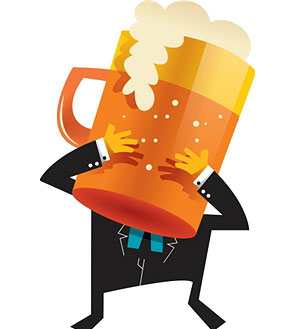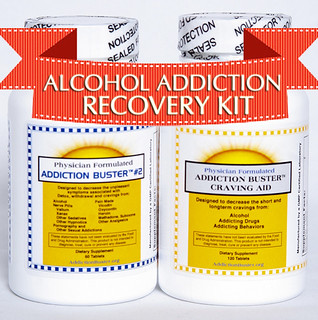![]()
On Sunday, in the morning before the Super Bowl was scheduled to be played, the tragic news broke that actor Philip Seymour Hoffman had been found dead, with a needle stuck in his arm, the victim of an apparent heroin overdose. The following day, on the Psychology Today website, frequent contributor Stanton Peele posted Another One: Why So Many Celebrities Die Following Rehab. Detailing Hoffman’s history, apparently he’d given up drugs and alcohol when he was 22 years old, and had been successfully abstaining for 23 years, when he reportedly “fell off the wagon.” He’d also sought help and had been in rehab over the past six months. Peele wonders why he, and so many other celebrities, overdose and die “after recently having been in treatment? After all, many people have lived long lives while using opiates.”
Interestingly, he says that this is not uncommon and cites our attitudes toward addiction and its “cure” as contributing factors. “What is dysfunctional is our temperance attitudes towards substances, their use, and their misuse. Our attitudes towards drugs are more lethal than the substances themselves,” he writes. While Hoffman was reportedly using heroin, the way we treat addiction for drugs or alcohol is exactly the same, and for purposes of AA and other rehab and treatment facilities, alcohol is considered just another drug on the panoply of addictive substances.
Peele has identified five reasons that he believes “these deaths occur so often following rehab.” Tellingly, he also believes they “stem from one basic fact of American rehab: the one and only goal of treatment is perpetual, lifelong abstinence. No treatment time is devoted to the essential truth that most rehab grads will use again, and to prepare them for this possibility.” This has long been my belief about what’s wrong with AA and other abstinence-based “cures” that don’t cure anything. They merely suppress a person’s impulses without addressing the underlying causes or finding a way to actually cure anyone, which should mean learning how to drink in moderation without returning to bingeing or over-indulging. Peele also believes that “all of these failures to prevent post-rehab deaths are due to the kind of unrealistic, perfectionist, just-say-no approach America takes to drugs, alcohol, and addiction.”

But here’s an overview of the five reasons he believes people leaving rehab so often get into trouble, sometimes fatally:
1. Combining different drugs and alcohol. Rehab grads are not made aware that the worst usage pattern is to combine alcohol and other drugs, particularly depressants. What is usually mistakenly called “overdose” is in fact the result of such lethal combinations, which depress the nervous system and cause the person’s breathing to fail.
2. Lower tolerance. If rehab grads haven’t been using for some time (which is likely the case when they are fresh out of the rehab facility), their tolerance for their drug of choice has diminished. Rehab residents should be schooled in the basic facts of tolerance and alerted that, if they use, they should lower their accustomed dosage.
3. In for a dime, in for a dollar. Twelve-step programs teach people that any level of use of any drug or alcohol is the equivalent of a full bore relapse, so that addicts and alcoholics give up all efforts at self-restraint once they have consumed any amount of a substance. As a result, they often experience a complete relapse after a slip. The opposite approach is to train addicts in relapse prevention, which teaches methods for “getting off the runaway train” at any point, from exposure to a substance, to initial use, to excessive use — for all of which there are remedies or “off ramps.”
4. Failure to have safeguards in place. Since the only permissible stance post rehab is to vow never to use a substance again, graduates are not “allowed” (or alerted) to take safety precautions.
5. Failure to have available an overdose kit. If you are going to use narcotics, you should have readily accessible an overdose kit, the main ingredient of which is naloxone (brand name, Narcan), a narcotic antagonist. In many states, overdose kits are not even used by emergency workers.
Those seem right, at least to my way of thinking. This is, for me, more evidence that America as a society has an unhealthy relationship with drinking. We seem unable to be reasonable in our approach to so many aspects of alcohol consumption and its consequences. And prohibitionist groups fan the flames of our dysfunction and make unwitting accomplices of the health and medical communities because keeping the status quo also keeps the money flowing to them and rehab centers, treatment facilities, etc. It seems that anyone who challenges the twelves steps or abstinence only approaches is immediately shot down. I can’t help but think that any system should be able to stand up to criticism and scrutiny in order to constantly improve it, but it certainly feels like the idea of powerlessness and abstinence are treated as sacrosanct dogma. And that means we’ll always be a nation of addicts who can never change.
Are addiction treatment providers the new snake oil salesmen? Just takes some pills and never touch another drop for the rest of your life and you’ll be fine. Trust us.


Jay – I much appreciate your continuous railing against all the psychobabbling hysteria & finding stuff that makes sense..Thanks for sharing a sane look at the addiction issue – & amen to the comments about the addiction “therapists”, who are pretty much cranially-rectally inverted when it comes to understanding that one size doesn’t always fit all.
I would suspect, based on yrs of observation, that low-key people do better w/programs like AA’s & their derivatives. High-strung addicts are taking drugs/ drinking to excess supposedly to calm down; when they’re forced or decide to swear off, they have a hard time staying calm & thus are more likely to relapse, and, like Peele says, don’t realize that their tolerance level for whatever “medication(s)” has dropped.
What’s even sadder is that the neo-prohbes conveniently forget about the number of people addicted to prescription drugs & the consequential tragedies from that sector. Peele’s certainly correct about alcohol & prescription drugs not mixing – many celebs back in the 50’s & 60’s died from a combined OD of tranquilizers &/or sleeping pills mixed w/alcohol. The Alcohol Justice types should be forced to listen to the Stones’ song “Mother’s Litlle Helper” & George Carlin’s “Drugs” routine (both from the late 60’s), then watch “Valley of the Dolls” (or read the novel, which is late 60’s/early 70’s). Then they need to be shown the street trade in Vicodin, Oxycontin, & whatever other painkillers are “hot” these days.